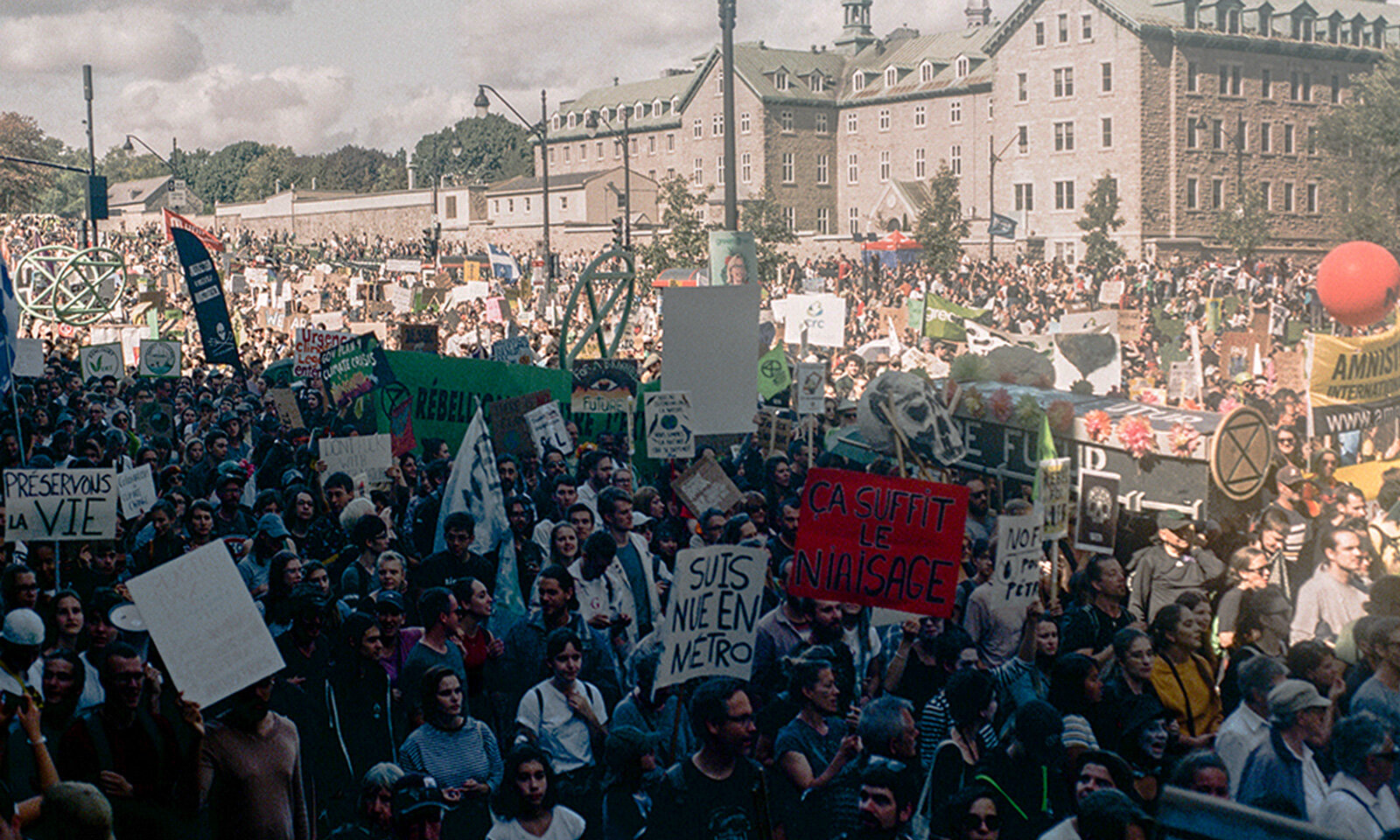The Walk of Life
All photos taken by Mauricio Herrerabarría during the September 27th Climate Change Strike in Montreal.
Movement, something seemingly trivial yet so vital. Without it, atoms wouldn’t collide and neither heat, light nor life would ignite.
Movement, such a basic concept yet such an escape from the rigorous hands of lockdown. As probably the vast majority of people, I’ve resorted to long walks to not lose my mind during these confined times. In the morning with some coffee in hand, or maybe after lunch to assuage the gut; later when the Sunsets—to enjoy golden hour—or nighttime when the owls call the shots, walking is now part of my daily life and after giving it much thought I can finally understand of it as one of the most important human activities because life in all its diversity unfolds before us when we are on foot1.
WE ARE ON OUR WAY
Regardless of time and generation, every time we leave our places with no direction we answer an invitation from the city that calls us to be part of something bigger. It might be our response to confinement, but promenades have been the cure for ailments ever since humans set foot—pun unintended—on Earth. Back in the 1800s the Danish philosopher Kierkegaard said,
“Above all, do not lose your desire to walk. Every day I walk myself into a state of well-being and walk away from every illness. I have walked myself into my best thoughts, and I know of no thought so burdensome that one cannot walk away from it.”
In fact, according to experts, the number of pedestrians is a clear thermometer of a city’s health, and considering that for the first time in history the majority of the global population is urban rather than rural—the UN’s 2018 Revision of World Urbanization Prospects calculates it at 55%, expecting it to increase up to 68% by 2050, 90% of that happening in Asia and Africa—it comes as no surprise that urbanists are now advocating pedestrianism as the first step to achieve the key objectives of the ideal city: lively, safe, sustainable and healthy.
The sole purpose of moving is primarily a thing of health, physical activity brings harmony to the mind and teaches us about the different functions of our bodies which reinforces our self-consciousness and asserts our own good values; a city that prioritizes pedestrianism put the health of its citizens first. At the same time, the more people walk or integrate with the public spaces, the more social and cultural opportunities resurface, resulting in a lively urban landscape full of human interaction and cultural exchange. An ideal city plans short walking distances and attractive public spaces to increase public activity and the feeling of safety. A city with a vision of the future embraces walking as a special form of communion between people who share space as a platform as well as a framework1, it gives control of life back to the people and not to the machine causing lower CO2 emissions and a better relationship with Planet Earth.
CHANGING THE WORLD, ONE STEP AT A TIME
Making our way through common city space can be a goal itself—but it can also be a beginning1. No story in history begun without the oscillating movements of the legs. Our ancestors based their ideas of progress on the never-ending nurturing processes that came with a nomadic lifestyle; for them, understanding the land and reinforcing their relationship with nature meant being at peace with the future. Now in 2021, social development and justice seem to be the guiding principles, but if there’s something the past has taught us is that all big social movements take the streets.
As urban theorist Jan Gehl puts it, without the city there’s no democracy, “City space provides an important arena for large political meetings, demos, and protests, as well as for more modest activities such as collecting signatures,” and even dares to think of streets and squares as the mediums to achieve a more humane criminal justice system, “We can think of closeness, trust and mutual consideration as the direct opposites of walls, gates, and more police presence.” Thus confirming that by improving the conditions for pedestrians, cities are not only eradicating traffic and pollution but also strengthening life.
In the book of life walking is the beginning, the starting point. Humans were created to walk, and all of life’s events large and small develop when we walk among other people1. While history serves as the context, “the street, the footpath, the square and the park are the grammar.” (Gehl)






